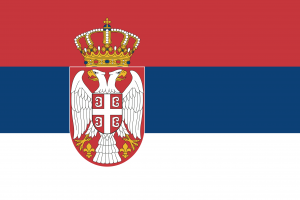Language/Serbian/Grammar/Verbs:-Infinitives/az
 Հայերէն
Հայերէն Български език
Български език 官话
官话 官話
官話 Hrvatski jezik
Hrvatski jezik Český jazyk
Český jazyk Nederlands
Nederlands English
English Suomen kieli
Suomen kieli Français
Français Deutsch
Deutsch עברית
עברית हिन्दी
हिन्दी Magyar
Magyar Bahasa Indonesia
Bahasa Indonesia فارسی
فارسی Italiano
Italiano 日本語
日本語 Қазақ тілі
Қазақ тілі 한국어
한국어 Lietuvių kalba
Lietuvių kalba Νέα Ελληνικά
Νέα Ελληνικά Şimali Azərbaycanlılar
Şimali Azərbaycanlılar Język polski
Język polski Português
Português Limba Română
Limba Română Русский язык
Русский язык Español
Español العربية القياسية
العربية القياسية Svenska
Svenska Wikang Tagalog
Wikang Tagalog தமிழ்
தமிழ் ภาษาไทย
ภาษาไทย Türkçe
Türkçe Українська мова
Українська мова Urdu
Urdu Tiếng Việt
Tiếng ViệtInfinitives in Serbian[redaktə | mənbəni redaktə et]
In Serbian, the infinitive form of the verb is used to indicate the action of the verb without specifying the subject of the sentence. The infinitive form is also used after some prepositions, conjunctions, and verbs.
Formation of the Infinitive[redaktə | mənbəni redaktə et]
The infinitive in Serbian is formed by taking the root of the verb and adding the suffix "-ti". For example:
| Serbian | Pronunciation | North Azerbaijani |
|---|---|---|
| govoriti | /ɡɔ̌vɔriti/ | говорити |
| pisati | /pǐsati/ | писати |
| raditi | /rǎditi/ | радити |
| živeti | /ʒǐvɛːti/ | живети |
Usage of the Infinitive[redaktə | mənbəni redaktə et]
The infinitive in Serbian can be used in the following ways:
- As the subject of the sentence:
Example: Pisati je moj hobi. (Writing is my hobby.)
- As the object of the sentence:
Example: Volim čitati knjige. (I love reading books.)
- After prepositions:
Example: Idem da vidim prijatelja. (I'm going to see a friend.)
- After conjunctions:
Example: Želim da idem na more, ali nemam novca. (I want to go to the sea, but I don't have the money.)
- After certain verbs:
Example: Moram da učim za ispit. (I have to study for the exam.)
Negation of the Infinitive[redaktə | mənbəni redaktə et]
To form the negative infinitive in Serbian, you simply add "ne" before the infinitive form of the verb. For example:
| Serbian | Pronunciation | North Azerbaijani |
|---|---|---|
| govoriti | /ɡɔ̌vɔriti/ | не говорити |
| pisati | /pǐsati/ | не писати |
| raditi | /rǎditi/ | не радити |
| živeti | /ʒǐvɛːti/ | не живети |
Example: Ne želim da idem u školu. (I don't want to go to school.)
Conclusion[redaktə | mənbəni redaktə et]
In conclusion, the infinitive is an important concept in the Serbian language. It is used to indicate the action of the verb without specifying the subject of the sentence, and it is also used after prepositions, conjunctions, and certain verbs. By understanding the formation and usage of the infinitive, you will be able to improve your Serbian language skills and communicate more effectively with native speakers.
Other lessons[redaktə | mənbəni redaktə et]
- 0 to A1 Course
- Cases: Nominative and Accusative
- 0 to A1 Kursu → Qrammatika → Sifetler: Muqayisəli və Ən yüksək
- Complete 0 to A1 Course → Grammar → Pronouns: Personal Pronouns
- 0 to A1 Course → Grammar → Verbs: Imperative
- 0 to A1 Course → Grammar → Verbs: Past Tense
- 0'dan A1 Seviyesine Kadar Tamamlayıcı Kurs → Dilbilgisi → Farklı Türlerde Fiiller: Tamamlanmış ve Tamamlanmamış
- 0 to A1 Course → Grammar → Nouns: Gender and Number
- 0 to A1 Course → Grammar → Verbs: Future Tense
- Verbs: Present Tense
- Verbs: Participles
- 0 to A1 Course → Grammar → Verbs: Reflexive Verbs

